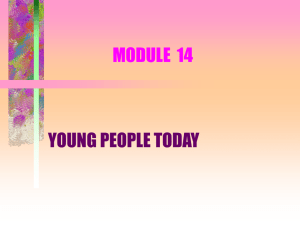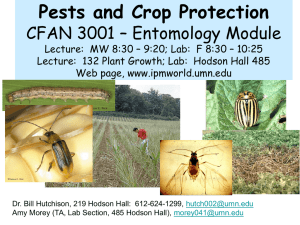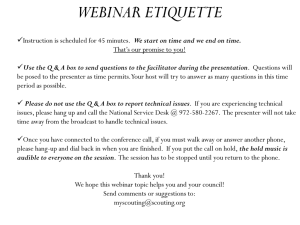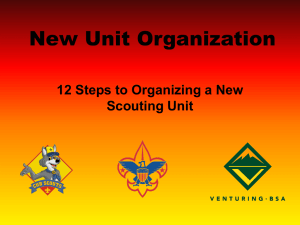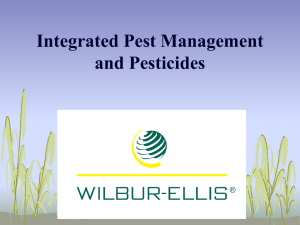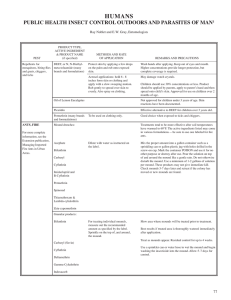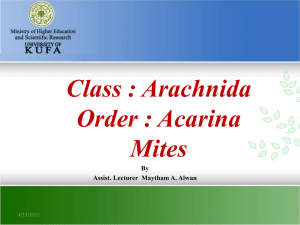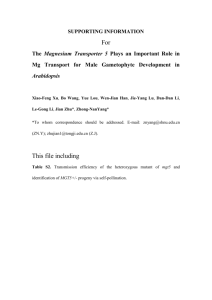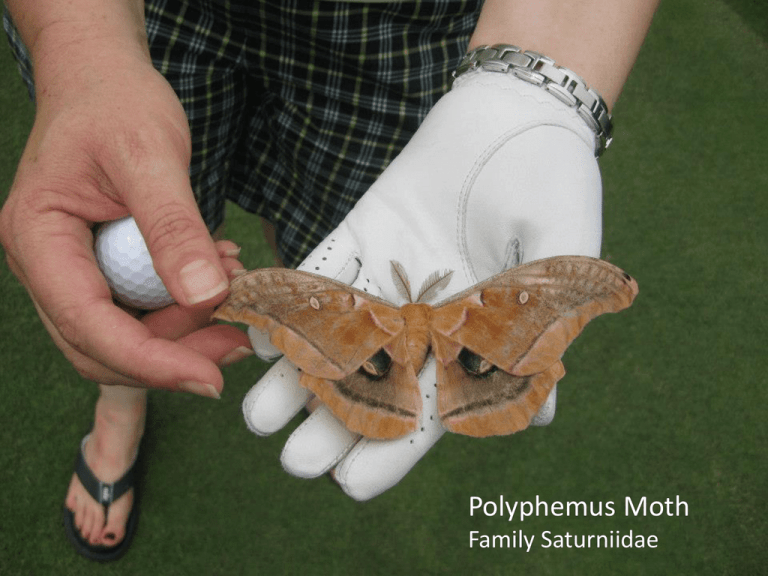
Polyphemus Moth
Family Saturniidae
Integrated Pest Management
for
Greenhouse and Nursery
Insect Pests
Jen Bergh
Technical Support Specialist
Turf & Ornamentals
Outline
Horticultural Production Environment
Pest Damage
Integrated Pest Management (IPM)
Decision Making
Programs & Rotations
Recipe for an Insect Pest
Fecundity – many offspring
Fast generations (enhanced by temp, H2O & sometimes N)
High rate of mutation: evolving resistance
No or few natural predators
Concentration of favored resource
Dispersal: ability to escape controls
Recruitment: ability to migrate into previously controlled areas
The Horticultural Production Environment
Concentrated resources
Life history escape hatches
Pest adaptations
Population dynamics
Thresholds
Pest Damage
Types of damage
Feeding – herbivory (direct)
Egg laying – oviposition (direct)
Nuisance - presence
Disease transmission – vectoring
(indirect)
Consequences
Scouting & ecological watch-outs
Scouting Watchouts
Which is mite damage? Which is thrips damage?
Cryptic Pests
Scouting Watchouts
Cryptic Life Stages
Cryptic Life Stages
Ecological Watchouts
Weather patterns – T, H, W
Microclimate
Crop transitions & refugia
Plant nutrition
Micro and macro-organisms
Population and genetic shifts
Integrated Pest Management
Scouting
Thresholds
Cultural &
mechanical tools
Biological tools
Chemical tools
Resistance Mgmt
Decision Making
Setting:
Nurseries
Greenhouses
Landscapes
Turf
Thresholds & tolerance
Budget
Recipe for Effective Insect IPM
Identify the insect & know its life cycle
Treat susceptible life stage(s)
Prevent resistance with multiple MOAs, rotation programs
Use cultural controls to enhance insecticide efficacy: sanitation
Monitor biological controls carefully – temp, light, N, vectoring
Scout regularly to stay ahead of populations
Treat before crop reaches the damage threshold
Case Study: Spider Mites
SE US foliage greenhouse with population resurgence
after knockdown miticide treatments
Perennial mite population
Usually just under threshold
Mid-July scouting revealed rising population
Preventative apps -> rescue application
Case Study: Spider Mites
Egg to Adult:
@ 50-68°F = 28 days
@ 77-95°F = 8 days
One female ≈ 50 offspring
Exponential growth curve @ 80°F =
13 X 106 mites/month =
13,000,000 spider mites
Case Study: Spider Mites
SE US foliage greenhouse with population resurgence
after knockdown miticide treatments
Rescue applications of miticide
No ovicidal activity
Imperfect spray coverage
Infrequent scouting
Autumn: population peaks with reproductive
females getting ready to overwinter
Case Study: Tetranychid Mites
Recommendation:
Improve spray coverage
Increase scouting
Scout sex ratios +
presence of eggs
Scout <7 day intervals
Rotation Partners
Pylon Miticide
Another MOA Miticide
Extoxazole (MGR)*
Ultra-Pure Oil*
MGRs and Oils
Etoxazole:
Beethoven TR
TetraSan
Other MGRs and IGRs – target your pest
Oils
Ultra-Pure Oil from BASF
Highly refined, clean oil
Applying oils:
Seasonally
UV more risky than humidity
Consider nighttime applications
Test plants + weather patterns
Programs & Rotations
Axioms - SOPs
Rotations
Careful preventative applications
Preventing vs. managing resistance
Resistance Management
Rotate MOAs in program
Avoid >2 applications with AI or in MOA
Avoid sublethal doses
Improve spray coverage
Use multifaceted approach – eg., biologicals +
cultural + chemical controls; contacts vs.
systemics
Modes of Action – IRAC Groups
Modes of Action – IRAC Groups
Resistance
Prevention:
<3 applications of the same MOA
Avoid sublethal doses
Be aware of non-target insects and dose
responses
Management:
Identify new MOAs
Create new rotations
Use mechanical controls
Isolate crops
Resistance
Use Insect Growth Regulators – IGRs
Avoid increasing reproductives
Stop maturation
Prevent ovipositioning
IGRs or MGRs should be part of every
insect rotation program
Conclusion
Open, dynamic systems
Tools
Information resources: CPS, BASF,
universities, IR-4, consultants, other hort
professionals
Contact
Jen Bergh
Technical Support Specialist
Turf & Ornamentals
jennifer.bergh@parnters.basf.com
(541) 908-5164

